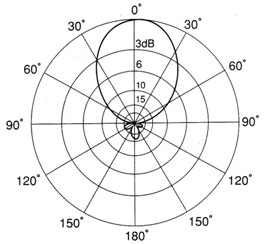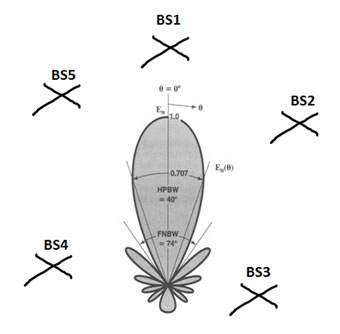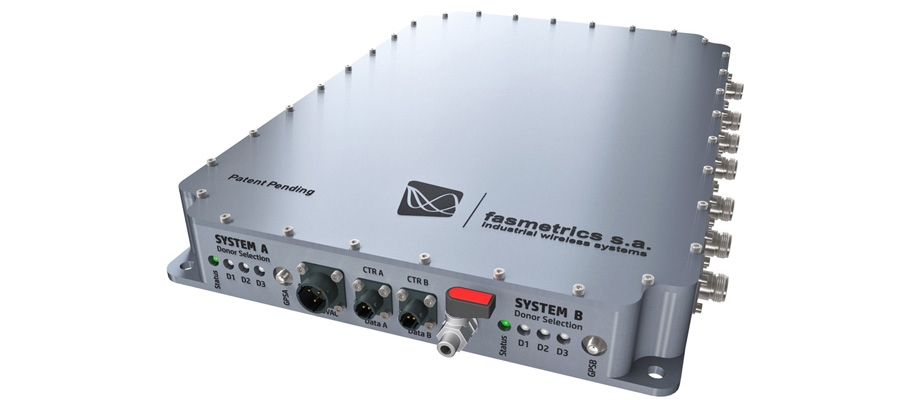3skelion is the product that makes possible the deployment of directional antennas on your in-transport repeater sites
Radio signals lose power as they pass through the air. The rate at which they lose power is a function of frequency, which can be derived into a formula for calculating the FSPL (or the Free Space Path Loss). This is a fundamental calculation: knowing how much power your radio signal lose over a given distance, it will permit you to:
- Pin-point the “cell-edge” of your radio links along the transport routes of interest.
- Form the radio link budget for the maximum functional range per Radio Bearer (RB).
- Understand how to optimize the link budget by compensating signal loses with gains.
Assessing a radio link for its voice call and data transfer capability is a pure radio planning activity. The link budget (per RB) is complex and needs to account many variables. However, one standard part on the link budget calculations is the signal’s FSPL.
Radio signal degrades in proportion to the distance covered. It can be basically modeled with the “inverse square law”: that is, signal degrades in direct proportion to one divided by distance squared (D represents distance):
This is a very simplified model, and while useful for understanding the radio signal attenuation rate over distance, it doesn't take frequency into account. It also ignores terrain (however, as a rule of thumb you can still use the power of two, especially for areas without obstacles such as in sea routes).

As you can see in the graph above, the inverse-square law shows signal dropping off rapidly over distance. However, when the transmitted signal is “distant” from its source (i.e. in the “far-field” region) its attenuation rate stabilizes and the rapid drop-off (as accounted in the “near-field” region) holds. Longer distances can now be covered with very low signal loses.
This is the reason why any additional gain on the link budget, extends the “cell-edge” performance of the radio links. Therefore, calculating the link budget (per RB) for low gain omnidirectional antennas vs calculating the link budget (per RB) for high gain directional antennas, we immediately realize the significant “cell-edge” improvement of our radio link.
The only thing you just have to do is to add the extra antenna gain on your link budget.

As we can see in the above graph, over some Km’s distance, the signal loses are less that 1dB/Km. This is a law of physics, and this is our secret. We understand that when boosting the antenna gain by a few dB’s, the received signal strength (i.e. 2G-RxLev, 3G-RSCP, 4G-RSRP) is also boosted by a few dB’s.
Therefore, in this rather straightforward way, we manage to extend the in-transport coverage on “distant” routes by some extra Km’s. This is very important when after some point on your transport route you “run-out” of signal (common problem when collecting the received signal strength below the receiver sensitivity).
Turning now on network quality KPI’s, we can easily identify that this received signal strength boost will not only extend the functional coverage of our system, but it will also enhance the overall quality of the service offered. Important to note at this point that Signal-to-Noise Ratio should be highly appreciated.
Signal-to-Noise Ratio (abbreviated SNR or SINR) is a measure we use in wireless systems in order to compare the level of a desired signal to the level of background noise. As we can see in the equation above, signal-to-noise ratio is defined as the ratio of signal power to the noise power.

SNR is very important as it is used in measuring the effectiveness of a communication system or network. Like all wireless communications systems, and as originally proposed by Shannon, the maximum error-free data rate achievable for a wireless network is a function of bandwidth and the Signal-to-Noise Ratio of the communication system.
To support flexible deployments, 3GPP specified bandwidths up to several MHz. In addition, “link-adaptation” was adopted allowing more efficient spectrum usage, mapping the most efficient MCS (Modulation and Coding Scheme) to a particular SNR.
The table below shows 3G technology throughput to SNR relationship. As the SNR increases, higher MCS are used, increasing the throughput. Link adaptation is standards-based and the spectrum owned by the wireless operator is finite. Ultimately, improving the SNR is the primary goal to increase data throughput on any wireless system.
This is the reason why any additional gain on the link budget, directly improves the repeater service area throughput along the transport route. Therefore, estimating the throughput rates (per SNR) for low gain omnidirectional antennas vs estimating the throughput rates (per SNR) for high gain directional antennas, we can realize the significant throughput performance improvement that can be achieved.
The only thing you just have to do is to add the extra antenna gain on your signal power.
Of course SNR calculations are complex, but as a rule of thumb, you can still directly add the power gained from the directional antenna, especially for routes with very low interference figures.
Highly directional antenna patterns will not only offer the additional power gain needed on the received signal strength. They will also act as filters for both internal and external interference sources. On fine regulated markets, the most serious threat is proved to be “own” interference, the one coming from our own neighboring base stations.

In the above indicative directional antenna pattern we may notice that on a common 60⁰HBW panel antenna (usually deployed on 3-sectored sites), the directional gain outside the main beam (±30⁰) is reduced by an order of a magnitude (over 10dB for the azimuth region 30⁰ to 60⁰ and over 15dB for the backlobe region at ±90⁰). Therefore, any signals coming from directions outside the main beam are naturally filtered out. Irrespective of the actual gain, panel antennas of any kind, fulfill this signal filtering feature (check 1st upper sidelobe suppression and front to back ratio (F/B) on any directional antenna data sheet).
The only thing you just have to do is to subtract the antenna gain from your noise power.
This “own” interference filtering will not only boost further the system’s data throughput rates (through its SNR relationship already explained) but it will also enforce the automatic optimization of pilot-pollution (when present) in the repeater service area. Pilot-pollution is of high importance and should be top prioritized when planning the repeater’s transport route.
Briefly, when the number of strong cells exceeds the active set size, there is pilot-pollution. Typically the active set size is 3, so if there are more than 3 strong pilot signals received, then there is pilot pollution. Strong pilots are assumed to be the signals received with signal strength >-100dBm within the handover window size (4dB to 6dB) of the dominant cell.
Therefore, assuming that in most of the cases the repeaters are required to re-transmit signals from “distant” base stations (usually at noise floor level), we expect that these signals (especially in open areas) will be assuming an averagely similar path loss. Remember the radio signal attenuation in proportion to the distance covered as explained in the previous paragraphs “…over some Km’s distance, the signal loses are less that 1dB/Km…”.
Although all base stations present will not form the same link budget along the transport route, it is usual to find various segments on the route with more than 3 pilots active (one of which dominant) having signal strengths within the handover region (i.e. difference of 4dB to 6dB between them – or 5Km to 10Km away from each other). These pilots, although may be received at noise floor levels (and definitely <-100dBm – important pilot-pollution criterion – after the repeater amplification (which is >100dB) will appear with strong signal strength in the service area.

The use of directional antennas is of outmost importance when optimizing pilot-pollution.
The main problem with pilot-pollution is not just the degradation of the network quality KPI’s; it is far more serious than quality, it has to do with the actual network accessibility. Severe pilot-pollution like the one described, will totally block mobile communications of any kind (voice and data) in the service area. Pilot-pollution is a usual phenomenon on sea routes, where the repeater service area is actually in a vessel, and this vessel operates at some distance from the coast.
In cases like distant sea routes, there is no possible way to handle pilot-pollution other than using high gain directional antennas. It becomes clear that the inherent filtering capability a directional antenna has over the received signals along the horizon, is of paramount importance. The antenna main beam will enhance the signal strength of the dominant/service cell, while any other signal pointed on the sidelobes (or backlobe) will be significantly attenuated (with over 15dB Δ with respect to the serving cell). This fact makes the directional antennas ideal to automatically optimize the pilot-pollution.
Summing-up, adopting directional antennas on the in-transport repeater sites, in comparison to the legacy omnidirectional antenna choice, can offer us with significant benefits on network coverage, capacity and integrity performance.
Recapping:
- Coverage Boost
Directional antennas can extend system coverage up to several Km’s compared to the equivalent coverage offered from the legacy omnidirectional antenna types. This directional antenna feature is of particular interest on distant transport routes where the signal strength levels in the repeater service area appear to be below the Ue’s receiver sensitivity.
- Capacity Boost
Directional antennas will boost system capacity offering up to several Mbps higher throughput rates in most of the transport route. This directional antenna feature is of particular interest on routes where high interference from “own” neighboring cells is present. In either “dirty” or “clean” radio environments, directional antennas will significantly improve the SNR’s which will in turn lead to better throughputs in the repeater’s service area.
- Integrity Improvement
Directional antennas will significantly improve the repeater’s service area accessibility and retainability KPI’s along the transport route. Either by boosting coverage, filtering-out “own” interference, or optimizing pilot-pollution, directional antenna deployment will ultimately manage to improve the network’s integrity. The in-transport network users will experience a better network performance and will return you increased user loyalty.


